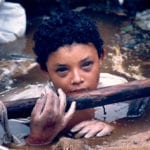 Movies and TV
Movies and TV  Movies and TV
Movies and TV  History
History 10 Things You Never Knew About Presidential First Ladies
 Movies and TV
Movies and TV 10 Zombie Movies That Will Actually Terrify You
 Humans
Humans 10 Times Scientists Were Absolutely Sure… and Absolutely Wrong
 Our World
Our World 10 Pivotal Moments for Life on Earth
 Movies and TV
Movies and TV 10 Most Realistic Medical TV Shows of All Time
 Creepy
Creepy 10 Eerie & Mysterious Ghosts of the Pacific Coast
 Weird Stuff
Weird Stuff 10 Typos That Accidentally Changed History
 History
History 10 Times Trickery Won Battles
 Technology
Technology 10 Awesome Upgrades to Common Household Items
 Movies and TV
Movies and TV 10 Movie Flops That Found Their Way to Cult Classic Status
 History
History 10 Things You Never Knew About Presidential First Ladies
 Movies and TV
Movies and TV 10 Zombie Movies That Will Actually Terrify You
Who's Behind Listverse?

Jamie Frater
Head Editor
Jamie founded Listverse due to an insatiable desire to share fascinating, obscure, and bizarre facts. He has been a guest speaker on numerous national radio and television stations and is a five time published author.
More About Us Humans
Humans 10 Times Scientists Were Absolutely Sure… and Absolutely Wrong
 Our World
Our World 10 Pivotal Moments for Life on Earth
 Movies and TV
Movies and TV 10 Most Realistic Medical TV Shows of All Time
 Creepy
Creepy 10 Eerie & Mysterious Ghosts of the Pacific Coast
 Weird Stuff
Weird Stuff 10 Typos That Accidentally Changed History
 History
History 10 Times Trickery Won Battles
 Technology
Technology 10 Awesome Upgrades to Common Household Items
Top 10 Dreadful And Haunting Rivers
The flowing watercourse of a river can be a remarkable sight for those who relish the beauty and excitement of natural streams. There are, however, countless rivers around the world that are marred by unspeakable tragedy.
The following list delves into the history of these waterways, examining a myriad of inexplicable deaths, grisly murders, and deadly creatures lurking below the serene surface.
10Toxic Algae

When the weather in New Zealand becomes warm and dry, the Greater Wellington Regional Council must step into action alerting all in the nation about the imminent danger blooming in the Hutt River. Toxic algae—Cyanobacteria—flourishes when the temperatures rise, posing a significant risk to humans and animals if ingested. The neurotoxin of the algae is, astoundingly, more deadly than cobra venom.
What makes the river especially frightening is when pieces of algae break away from the rocks allowing for one to inadvertently ingest the toxin. When the toxic mats of slime dry out the situation becomes even more troublesome; the algae becomes, quite frankly, appetizing for children and dogs. Between 2003 and 2018, it was reported that 150 dogs died following a day at the river. The statistics pertaining to human mortality is unspecified; nonetheless, tourists and locals continue to hit the deadly summer waters of the Hutt despite the dire warnings.[1]
9“If You Enter the River, You Will Die”

Just outside the nation’s capital lies one of the deadliest stretches of water in the eastern United States, the Potomac River. Despite being a tremendously popular destination for summer festivities, the cascading rapids claim numerous lives every year.
In a fruitless attempt to dissuade tourists and locals from entering the treacherous waters, officials erected a sign in 2010 with the dreadful warning, “If you enter the river, you will die.” Though the rhetoric may seem quite melodramatic, it comes one year after a group of six drowned in the river.[2]
Sadly, the majority of fatalities occur during seemingly harmless outings such as playing fetch with one’s dog or simply walking into ankle-deep shallows to cool off. On Memorial Day weekend in 2010, a mother who stepped into the shallow water to retrieve a ball was swept away prompting her 13-year-old daughter to go in after her. Both of their bodies were recovered several days later. Due to the effective drowning machine of the whitewater, kayakers must sign a release form with Maryland officials before entering the river. According to resident Mark Regis, “We say we know it’s spring when we hear the sirens. The weather warms up, and boom, the drownings start. You never get used to it.”
8Floating Graves

In January 2015, a group of villagers in Varanasi, India stumbled upon 100 corpses washed up in a canal in the Ganges River. Varanasi, which is the country’s oldest city, is also the religious capital where “millions of Hindus want to die or at least have their ashes spread in the Ganges” in order to achieve moksha, eternal liberation.
On average, 30 to 100 bodies are placed in the river each day after being set ablaze following a riverside cremation. Families who cannot afford a proper ceremonial cremation resort to depositing the deceased directly into the Ganges River. Corpses that are spared from being picked apart by wild dogs and carrion birds are left to rot in the river, often times floating within feet of families rinsing their mouths or bathing.
To make matters worse, flowing beneath the surface is millions of gallons of raw sewage and effluents resulting in a myriad of waterborne diseases. In fact, eighty percent of the diseases in rural India are due to water pollution, often resulting in diarrhea which claims the lives of 600,000 Indians per year.[3]
7Tormented Souls of the White River

In the early morning hours in February 1887, the Boston-Montreal “Night Express” derailed causing the train to plummet off the Hartford Bridge into the freezing waters of the White River below. The fireball that erupted caused the bridge to collapse in what is known as the worst railroad disaster in the history of Vermont. Passengers who were not burned beyond recognition were identified by remnants of clothing or personal items. A parent and child were discovered among the deceased fused together in a final poignant embrace. In all, 37 people were killed in the tragedy. To date, hauntings are reported along the riverbed where the disaster occurred, believed to be the souls of those who were crushed, drowned, or burned alive.[4]
People in nearby Hartford avoid the area if possible given the numerous reports of ghostly sightings. Throughout the years, passersby reported to have heard wailing and screaming cries of help beside the river while an eerie scent of burning wood lingered in the air. In addition, apparitions of railway workers, as well as a young boy adorned in 19th-century attire, have been sighted hovering above the river as if standing on the ice. Whether or not these are the tormented souls of the victims reliving the tragedy, people who dare to venture to that particular area of the White River are often overwhelmed with unfathomable anxiousness.
6The Corpse Collector

The unpleasant trade of being a corpse collector is sadly in demand on the Yangtze River in Wuhan, Central China. On a daily basis, collectors are notified of “floaters” coming down the river, causing boatmen to insist on higher wages. This has stirred controversy in the region given that collectors began refusing to retrieve corpses, further polluting the third-longest river in the world.[5]
The reason such an unimaginable and grotesque line of work exists is due to the unremitting tragedies the river has borne witness to for nearly fifty years. In 2015, for example, a passenger cruise ship sank in the Yangtze during a storm killing 456 people, mostly senior citizens. Family members whose loved ones were not swept away in the water would later discover that all bodies collected became part of a mass cremation.
Perhaps what is more disturbing is the continuous flock of desperate and tormented souls who chose to end their lives on the famous Nanjing Yangtze River Bridge. As with other infamous bridges such as San Francisco’s Golden Gate, the bridge in Nanjing has become a popular suicide hot spot. Once a week, someone plunges 130 feet (40 m) to the river below where their body then floats downstream awaiting their collector. Those who miss the river have the misfortune of landing in the trees along the riverbank or are found “impressed in the earth like mud angels, two feet from rushing water.”
5Corpse Dumping

By the 1980s, the second-longest river in the United States, the Missouri, had become a notorious dumping site for dead bodies. The river’s seclusion allowed for a convenient place for killers to efficiently dispose of their victims. More often than not, the churning currents would float the body downstream into the city. By the mid-80s, law enforcement in Kansas City began to acknowledge the fact that they were “finding too many bodies floating” in the river. This prompted recurrent water patrols on the Missouri searching not just for victims of homicide, but drowning and other accidental deaths as well.
The most sinister of acts occurred between 1982 and 1995 when the bodies of seven women, all of whom had their legs cut off, were found in the river. The youngest victim, Beverlie Tracy, was just 13-years-old when her torso was pulled from the murky waters in April 1991.[6]
In 1996, Gregory Breeden was charged with the murder of Viola McCoy whose dismembered remains were found in the Missouri in September 1994. Despite being a suspect in the other six homicides, prosecutors dropped the charges when a key witness stopped cooperating. The remainder of McCoy’s life was spent in and out of prison until his death at the age of 67 in May 2014. The murders of the seven mutilated women, including McCoy, remain unsolved.
4The Colorado River

Aside from the majestic beauty and natural wonder of the Grand Canyon, the Colorado River that flows between the canyon walls is marred by a history of tragedy. From the inexplicable vanishing of honeymooners Glen and Bessie Hyde in 1928 to the possible slaughter of three members of the Powell Expedition in 1869, countless sandstone inscriptions are seen along the canyon walls, each one marking a tragic loss. Physical reminders of the fallen are strewn throughout the river as well, such as the rusting hulk of Bert Loper’s boat—a river runner killed in 1949—which is still lodged among the boulders.
Every year, the river bears witness to an escalating number of deaths. In recent years, drownings among private boaters have increased substantially, as have suicides.[7] Perhaps the most diabolic of events have been the senseless, vicious murders along the banks of the Colorado. In May 2006, Japanese tourist Tomomi Hanamure was stabbed 30 times on her 34th birthday. Her body was discovered nearly a week later in a secluded section of the river.
Many believe the restless souls of those who have perished continue to haunt the canyon. According to former guide Christa Sadler, she and a friend were camping when they were suddenly awoken by “ghostly, wraithlike visions urging them to leave.” Understandably, the two packed up and left in the middle of the night.
3An Acquired Taste

The Kali River, which flows along the Indian-Nepal border, is home to one of the world’s largest and most vicious freshwater fish, the goonch. Primarily known for being a giant man-eating catfish, the goonch was responsible for a series of fatal attacks in three villages on the banks of the river. In each horrifying scenario, the unsuspecting victim—whose ages range from children to adults—was abruptly dragged underwater as numerous eyewitnesses watched helplessly. Even a domestic water buffalo could not break free from the strange animal’s grasp. To date, not a single corpse or even evidence of the victims’ clothing has ever been recovered. When underwater investigators toured the Kali River, numerous group sightings of “man-sized” killer goonch were reported. In fact, one of the largest goonch to be captured was six feet (1.8 m) long and weighed 166 lbs (75.5 kg).[8]
According to British Biologist Jeremy Wade, the rising number of fatal attacks could be due to the goonch’s craving for human flesh. Along the river banks of the Kali, it is not uncommon for funeral pyres to discard half-burnt corpses. Thus, it is theorized that the giant catfish has developed a taste for the partially-cooked departed.
2The Congo River

Under the guise of humanitarian motives, Belgium’s King Leopold II annexed the Congo causing nothing but mayhem along the Central African riverbanks in the 19th century. Throughout the Congo River, depots were established by the King’s officials leading to the beginning of horrifying events often referred to as the “forgotten holocaust.” Villages along the water were burned, women were raped, men were executed, and even children were subjected to having their hands and feet chopped off.
These atrocities would be a prelude to the horrors to come on the African river solely at the hands of Mother Nature. Case in point, an outbreak of the pneumonic plague occurred in a major trading center on the Congo River in 2005. Over 60 casualties occurred within the first four days while hundreds of diamond minors were infected, ultimately spreading the illness throughout the river on their travels.
The waters of the Congo are also some of the most treacherous. Those brave enough to venture out not only have to be cognizant of the forcefully swift currents but aggressive fisherman and locals as well. Every year, hundreds of people perish after their boats have capsized due to storms or collisions with rocks. In such cases, pillagers have been reported to emerge with the sole intent of looting goods even at the cost of someone’s life. After a boat fire in 2010, opportunistic thieves refused to help the drowning passengers as they ransacked the burning vessel while bludgeoning the helplessly despondent passengers with oars in the dark.[9]
1Cannibalism

In 1961, Michael Rockefeller—son of then-New York governor Nelson Rockefeller—disappeared while collecting artifacts along the Ndeiram Kabur River in New Guinea. Rockefeller’s body was never found leading many to speculate that he fell victim to a cannibalistic tribe living within the rain-soaked jungle.
One tribe in particular, the Korowai, continues to haunt the riverbeds threatening to kill outsiders whom they refer to as laleo, “ghost demons.” In addition, centuries-old superstitions have led to innumerable ceremonial slaughters among Korowai’s own tribesmen in an erroneous endeavor to ward off sinister spirits. The manner in which they carry out their butchery is unsurprisingly primitive, relying on stone axes, and bows and arrows. Those who commit the actual killing receive the honor of keeping their victim’s skull as if it were a trophy.
One tribesman who spoke with Smithsonian Magazine in 2006 stated that after their victims are chopped to pieces they wrap each body part in banana leaves and share them among the clan members. “We cook the flesh like we cook pig, placing palm leaves over the wrapped meat together with burning hot river rocks to make steam.” If becoming dinner is not enough to deter a visit to the Ndeiram Kabur River, one must always be mindful of the various killer reptiles and diseases including malaria, tuberculosis, and elephantiasis.[10]
Adam is just a hubcap trying to hold on in the fast lane.
Read more stories about mysterious waterways on 10 Mysterious Watery Graves and 10 Ghosts And Legends Of The Ohio River Valley.





![Top 10 Haunting Images Of Historic Tragedies [DISTURBING] Top 10 Haunting Images Of Historic Tragedies [DISTURBING]](https://listverse.com/wp-content/uploads/2020/05/33758v-150x150.jpg)


